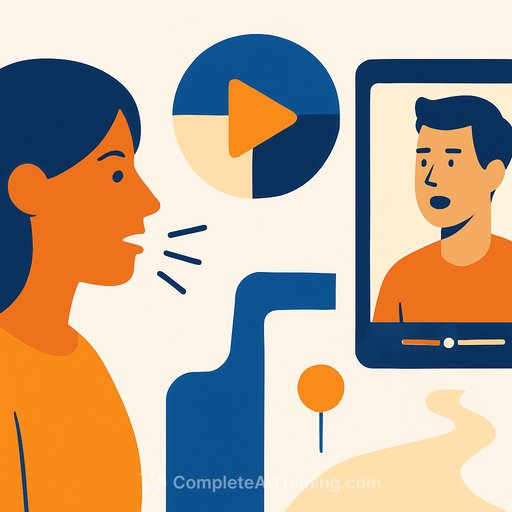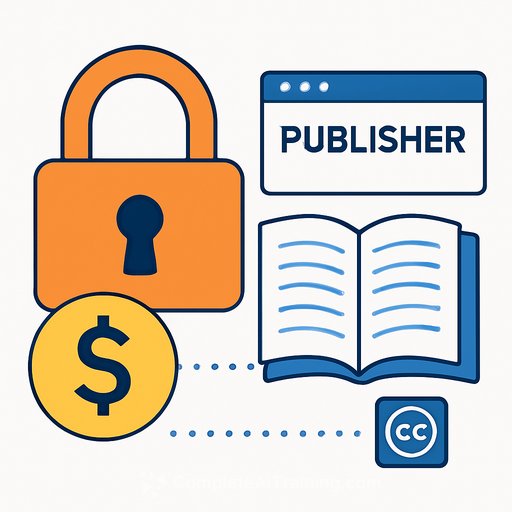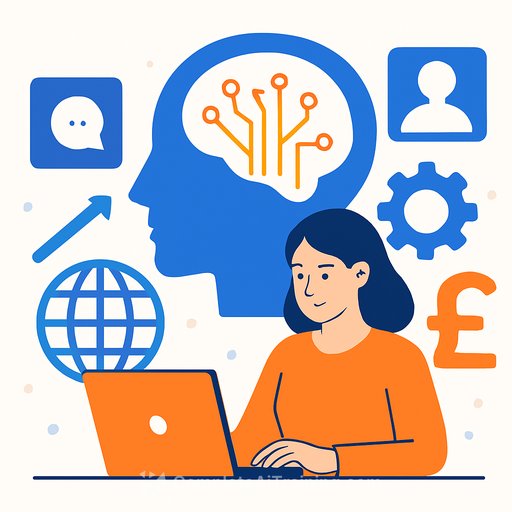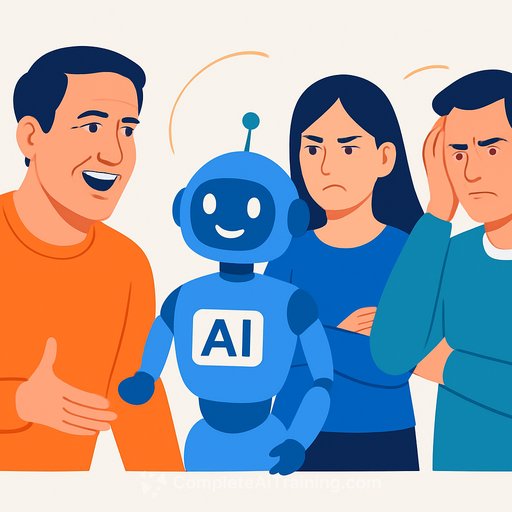Sora 2: Video that behaves like the real thing
Sora 2 pushes video generation into new territory. It's "scary good" in realism, physics, and control-enough to reset expectations for how creatives concept, produce, and ship work. It also hints at where AGI is heading: systems that learn by simulating the physical world with fewer shortcuts and more cause-and-effect.
What's new and why it matters
- Physics that makes sense: missed shots bounce off the backboard, objects don't teleport to satisfy a prompt, and scenes keep continuity.
- Complex scenes: multiple characters, specific motions, and detailed backgrounds while holding a consistent visual style.
- Synchronized dialogue and sound: natural speech, ambient audio, music, and scene acoustics that match what you see.
- Style range: realistic, cinematic, anime, and more-without losing coherence.
One demo showed a generated Sam Altman with strikingly accurate facial detail, lighting, and voice. It looked authentic enough to raise serious questions about identity, consent, and how we label synthetic media. This isn't just face-swapping; it's near-seamless performance.
Why better physics changes creative work
Older models often "cheated" to satisfy a prompt. Sora 2 models failure and friction. That matters for story beats (near-miss moments, timing, and blocking) and for previsualization you can trust. It also ties to a bigger idea: world models that train embodied AI in simulation before real deployment-safer, cheaper, and faster iteration for complex tasks.
Hands-on: the app feels familiar
Sora 2 runs through a new web and mobile app with a short-form video feel. You type a prompt, pick options, and get a clip. In one demo, a "three-way UFC fight" placed multiple people-including a user and Sam Altman-into a realistic scene, matching clothing and background for continuity. The likeness capture is strong. Use it with consent and clear disclosure.
What's still imperfect
- Minor artifacts: a dog "running through water" looked off in one shot.
- Subtle morphing: brief wrist distortion in a martial arts clip.
These are edge cases rather than constant failures. Expect steady refinement.
For creatives: practical wins you can ship this quarter
- Previs and animatics with reliable physics for blocking, camera moves, and VFX planning.
- Spec ads and social spots with synced VO, music, and ambient sound-no external audio edit needed.
- Pitch decks with short realistic sequences that sell mood, story logic, and brand feel.
- UGC-style iterations for A/B testing hooks, offers, and voice tones before paid spend.
- Education, explainers, and product demos with consistent style across scenes and characters.
Creative workflow to adopt now
- Define your style bible: aspect ratio, color profile, lens, lighting, motion rules, character notes, and brand cues baked into every prompt.
- Cast with consent: written releases for likeness and voice. Avoid public figures unless you have explicit rights.
- Audio plan: script timing, VO guidance, music direction, and room tone notes inside the prompt to lock sync.
- Failure-aware prompts: specify how misses, rebounds, and collisions should look and sound to keep continuity.
- QC checklist: continuity, physics sanity, lip-sync, hand integrity, and environment consistency before final export.
- Version control: store prompts, seeds, and outputs so teams can reproduce and iterate reliably.
Ethics and brand safety
- Consent first. No likeness, voice, or brand assets without permission.
- Disclose synthetic media clearly on client work and public posts.
- Avoid realistic portrayals of living people in sensitive contexts.
- Keep records: who approved, what rights you have, and what prompts produced the asset.
AGI implications, in plain terms
Better physics and consistent causality make Sora 2 more than a visual tool. Systems that can model action and reaction become useful simulators for training agents and robots. That feedback loop-simulate, learn, deploy-brings practical AI closer to daily production work and future automation.
Where this goes next
Expect faster concept-to-cut cycles, smaller crews for certain formats, and more experimentation across ads, film, and interactive content. The constraint shifts to your taste, your prompts, and your process. If you build a tight pipeline now, you'll move faster than teams waiting for a "perfect" version.
Start here:
- Read the official overview of Sora's approach to video generation for grounding in capabilities and limits: OpenAI: Sora.
- Explore tools and training to level up your generative video workflow: Generative video tools.
Bottom line
Sora 2 brings realism, physics, and audio into one controllable system. Use it to prototype faster, pitch sharper, and produce with fewer handoffs-while keeping consent and disclosure non-negotiable. The teams who adapt their workflow first will set the standard everyone else follows.
Your membership also unlocks:






